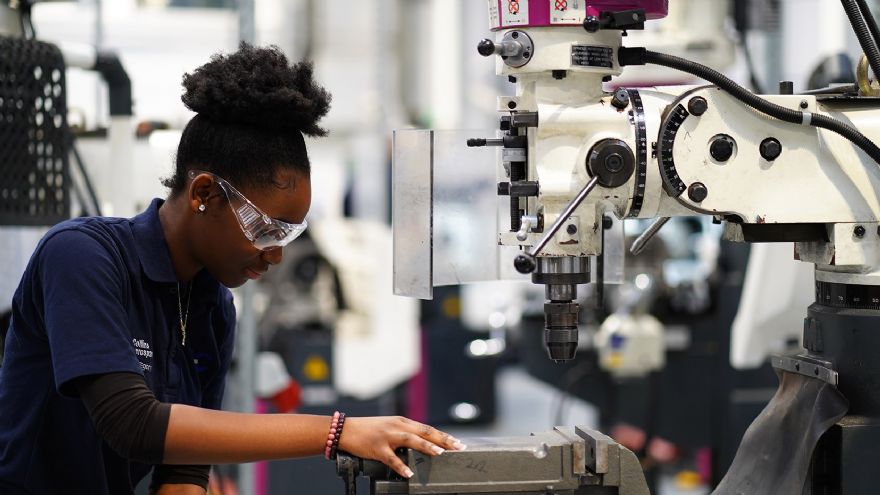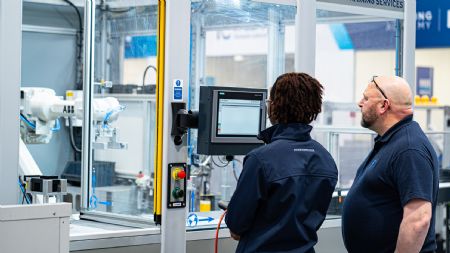
Less than one-fifth (18%) of engineering and manufacturing businesses are confident that the Government can solve the skills shortage according to a new report out today. The latest
In-Comm Training Barometer, which took in the opinions of 103 managing directors and HR leads, paints a picture of industry confusion when it comes to understanding what the new Labour Government is doing to bridge the well-publicised gap.
78% of firms questioned believe that there is not enough support available to boost their training fortunes (a 6% increase on last year), while more than three-fifths (61%) do not understand what
Skills England has been set up to do. All of this is contributing to a mixed skills landscape for companies struggling to balance workforce development with going after new opportunities in electrification, reshoring and value-added engineering.
Gareth Jones,
In-Comm Training’s managing director, said: “I think the devil is going to be in the detail and the Labour Government needs to quickly communicate how it is changing apprenticeships and training support. The issue it faces comes from a lack of standardisation in the skills system through many different Governments, regardless of colour. This has created confusion, distrust and a lack of understanding and engagement.”
Struggling to look past the headlinesHe continued: “Our manufacturing companies, which have been battered by inflation, rising energy costs and the impending minimum wage and NIC increases, are struggling to look past the headlines and currently have little confidence that the Government is going to be a positive influence in helping it bridge the skills gap. A few announcements have already been made that indicate we are in the middle of change, but they have been announced before an actual industrial strategy has been finalised — there definitely appears to be an increased void between policy and the shopfloor.”

The
In-Comm Training Barometer is one of the UK’s leading reports on the current skills and training landscape, providing critical data on provision, apprenticeships and company sentiment. For the first time in the history of the survey, less than half (46%) of businesses are planning to increase investment in their training budget, a sign that external factors are encroaching on skills spending.
Meanwhile, two-thirds have issued a call to reform the Apprenticeship Levy, with a focus on making sure they have greater control on what they can spend funding on and a definite split between wanting money for apprentices and money for other types of training. There was an 8% uptick in the number of companies looking to recruit an apprentice at 69% of firms questioned, with developing future talent, fulfilling a skills gap and upskilling the three main priorities. In-house infrastructure and access to the right apprenticeship standards continue to be the largest barriers (26% and 23% respectively) to investing in vocational learning.
Greater national focusMr Jones continued: “It was interesting to see a rise in apprenticeship recruitment intentions this year. This mirrors what we have seen on the ground, with customers slowly releasing the shackles to take people on, underlining the resilience of engineering and manufacturing once more. While its an increase, there is still potential for more. The sector still needs a greater national focus that recognises its status as a top performing industry when it comes to positive contribution to GVA.

“Other positive results featured an increase in the desire to improve technology to boost productivity (81%) and firms being able to retain staff, with just a quarter struggling to keep workers. Is this a case of the jobs market turning in favour of the employer, new initiatives or firms introducing more flexibility and better working conditions?
“The influence of artificial intelligence (AI) on skills development is still relatively low, with 18% of firms admitting they have used it so far. This will be a slow burn, but we are seeing some of the larger firms embed it into their processes, as
Gestamp reinforced at a recent round table event we held.”
He concluded: “There has been a lot of discussion in industry about bringing back the old Engineering Industry Training Board (EITB) model. This was a levy-based system that all companies had to pay into and could then claim it back by funding apprenticeships and training. While this would engage the disengaged and encourage all companies to invest in developing talent, it could be a risky time to consider it with all the other added costs and no finalised industrial strategy. It is just a question for now, but a very interesting one.”